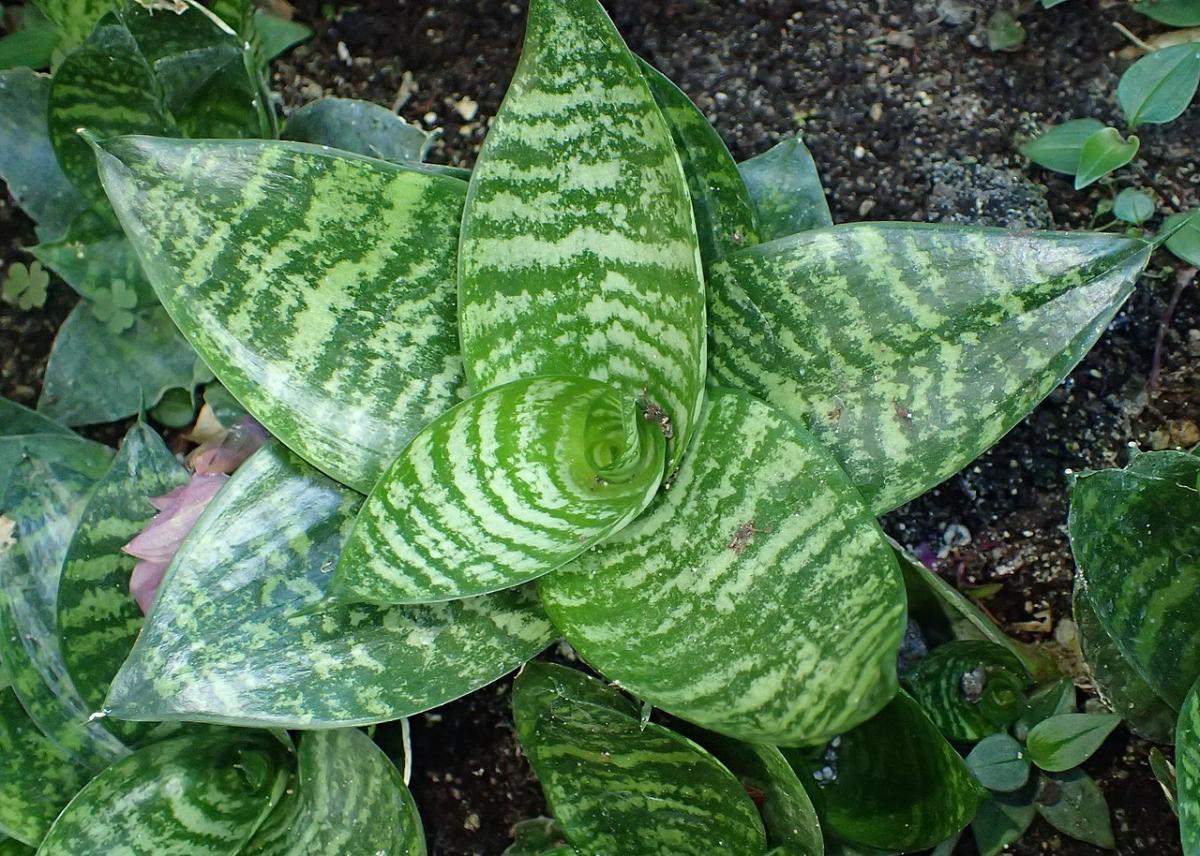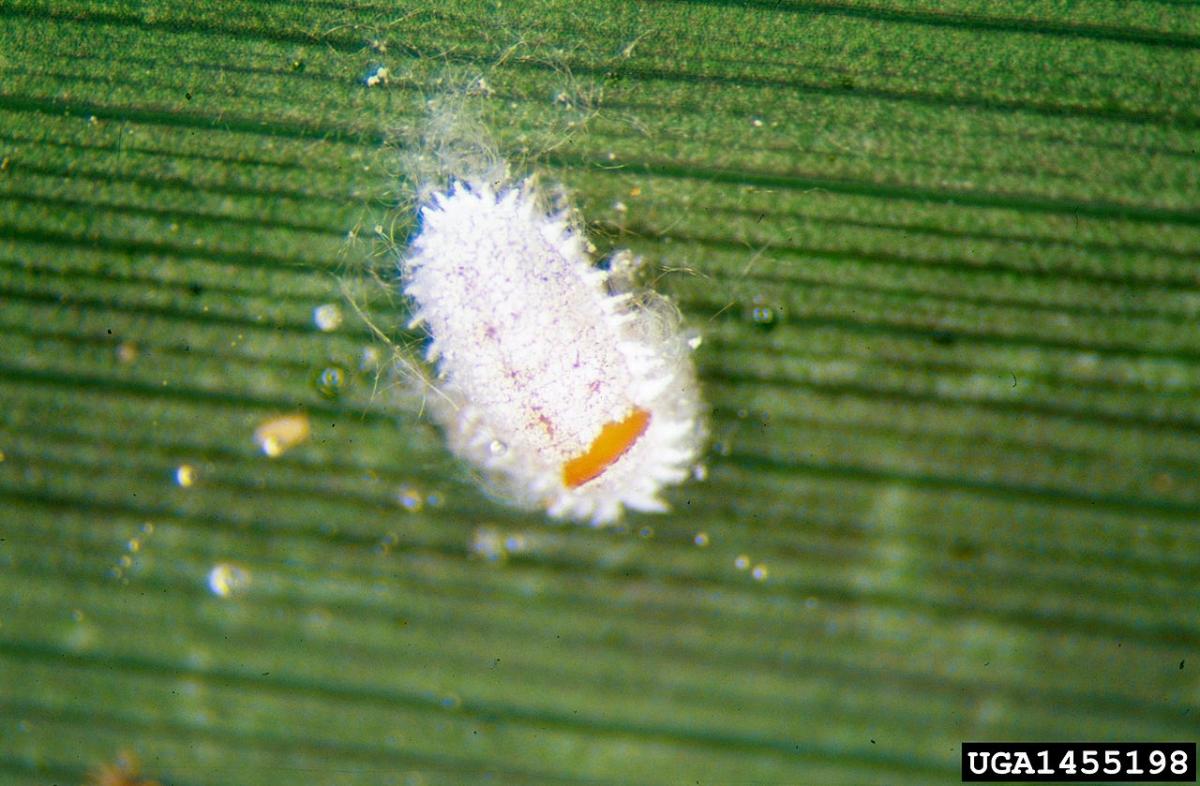
Image - Wikimedia / Krzysztof Ziarnek, Kenraiz
The Sansevieria is beautiful, so much so that it is very beautiful both indoors and under a tree in the garden. However, it may happen that, for some reason, it stops growing. And it is that, although we are talking about a plant whose growth rate is slow, if it stops doing so it is possible that we take action.
So, if you want to know why your Sansevieria does not grow, and what you have to do to solve this problem, let's see what could happen to him. In this way, we will better understand what has happened, and we can prevent it from happening again.
Sansevieria problems

Image - Flickr / GREGORIUZ
Sansevieria is a fairly easy plant to care for, since it does not have to be watered a lot and, in addition, it adapts to both indoor and outdoor conditions (as long as there is no frost). In addition, it is one of the most purifying air according to NASA (in this article you have more information about it), so it is one of the most suitable for growing at home or in the garden.
But we are not going to fool you: when we worry more about it is when problems can arise, like these:
- Mealybugs: they are a plague. One of the most common in plants, both ornamental and fruit. There are many types, such as the cottony or the one known as the San José louse, which looks like a tiny limpet. What they do is feed on the sap they absorb from the leaves, which gradually lose color. More information.
- Root / leaf rot: This happens when it is watered too much, and / or when the soil in which it is growing does not drain the water well. The roots must be aerated, that is, air must circulate between the pores of the earth, so that they can fulfill their functions correctly.
- Mushrooms: they appear when there is an excess of humidity, it is when the plant is having a bad time. If you see that its leaves are covered by a white or gray powder, then it has a fungal disease, such as powdery mildew.
- Lack of space: either because it has been in the same pot for years or because it is in an area of the garden where it cannot grow any more, if we want it to continue growing we must provide it with more space.
- Lacks / surplus lightSansevieria will not grow in direct sunlight, but it will not grow if placed in a dark area. Both the lack and the excess of light will harm it. In the first case, it will cause it to lose color and strength; in the second, the excess light will burn your leaves.
It is also possible that your sanseviera has stopped growing simply because has come to rest. This happens when temperatures drop below 18ºC. It is not a problem at all, but it is something that is part of their nature. All you have to do is ensure that the minimum temperature does not drop below 10ºC and water it every time the soil is dry.
What to do so that my sanseviera grows?
First of all, it is important to find out what is wrong with you, since the same measures will not be taken if you have mealybugs as if what happens is that the sun is burning you. So, let's see how to correct the problems and get it to grow:
How to eliminate mealybugs from sansevieria?

Image - Wikimedia / Whitney Cranshaw
Fortunately, the sansevier It is a plant with tapered leaves and without thorns. It is not very big either, so if you see that it has mealybugs, a very effective and quick remedy to eliminate them is the following: clean its leaves with mild soap and water. Simply that.
In the event that they reappear, it is highly advisable to spray their leaves with soft water, and then sprinkle diatomaceous earth on top. This is a natural insecticide that will dehydrate parasites and that you can buy here.
How to recover a rotten sansevieria?
When overwatered, and / or if the soil is not adequate, in the end the roots rot, and with them the leaves. For this reason, if your plant begins to be soft or rotten, It is important that you take scissors, clean them with soap and water, and then use them to cut all those parts that are bad. But in addition, you will have to treat it with fungicide so that the fungi do not appear (or if they have already done so, stop their advance).
Moreover, It is highly advisable that, if it is in a pot, it is removed from there and new substrate is put on it. The substrate can be a mixture of peat and perlite in equal parts, or pumice. Remember that the roots have to be well aerated, so planting them in peat alone could harm them.
How to cure a sanseviera with mushrooms?
The fungi that affect plants are opportunistic. As soon as they detect that their defenses are lowered, they attack. The problem is not only that, but when we detect them it is usually too late. Then, as soon as you notice that a leaf is becoming very soft, or if white or gray powder has already appeared, you will have to treat it with fungicide, be it chemical or natural, like copper.
If it is liquid, sprinkle the plant with it, as well as the soil; In the case of powder, spray the plant with water, water the soil and then sprinkle it on top with a little product (just a little. It does not have to be covered).
How to plant a sansevieria?
To answer that question You should know what is the size of an adult sansevieria, which can be up to 1 meter long by more or less the same width because it is a plant that produces many suckers throughout its life. These suckers can be separated in spring, with roots, but in any case it must have room to grow.
With this in mind, I recommend the following:
- Flower pot: Choose one that is wider than it is low. When the plant is adult, one that measures about 30 centimeters in diameter will suffice. Think that you will have to transplant it every 3-4 years.
- Garden: it is advisable to plant it in those areas that are empty or sparsely populated. Theirs would be that if you wanted to put a plant with similar characteristics, you put it at a distance of about 30-40 centimeters from the sansevieria.
Once you have decided where you are going to plant it, you will have to follow this step by step:
Plant it in a pot
- First, you have to mix peat with perlite in equal parts (for sale here).
- Then fill the pot halfway or a little less. Take into account the height of the pot in which it is now to know how much substrate you have to add approximately.
- Next, carefully remove the sansevieria from the pot. Feel free to tap it if it struggles to get out, and don't worry if its roots snap a bit.
- Then put it in its new pot. Make sure it is neither too high nor too low.
- Finally, finish filling and water.
Plant it in the garden
- Make a hole of about 50 x 50 centimeters with a hoe.
- Then fill it halfway with a mixture of peat moss with perlite, pumice (for sale here), or quality cactus substrate.
- Next, take the sansevieria out of the pot and put it inside the hole. If it is too low or too high, add or remove substrate.
- Finally, finish plugging the hole and water.
Where to place the sansevieria?

Image - Wikimedia / Peter A. Mansfeld
As we have commented before, the sansevieria wants light, but not in excess. Therefore, if you see that it loses color or strength, It is advisable that you take it to a place where there is a lot of clarity. For example, if you have it outside, a good place would be under the shade of a tree or a mesh.
If, on the other hand, you have it at home, place it in a room where there is a lot of light. But keep it away from the windows, otherwise the magnifying glass effect could occur, which would burn the leaves.
Eye: if your plant has already suffered burns, they will not disappear. But once it receives the amount of light it touches, neither more nor less, it will produce healthy leaves.
We hope you can solve the problem of your sansevieria, and make it beautiful again.
It has medicinal effects and how to do it
Hi Romeo.
No, this plant does not have medicinal properties. Greetings!
My sword of Saint George has a white wilt on two blades, what could it be and what can I do to solve it thanks
Hello Laura.
Have you noticed if that stain can be removed? It is that sometimes what we think is a stain, is actually a cochineal.
As these plants have wide leaves, and therefore are good to clean, you can remove them with water and diluted neutral soap.
A greeting.